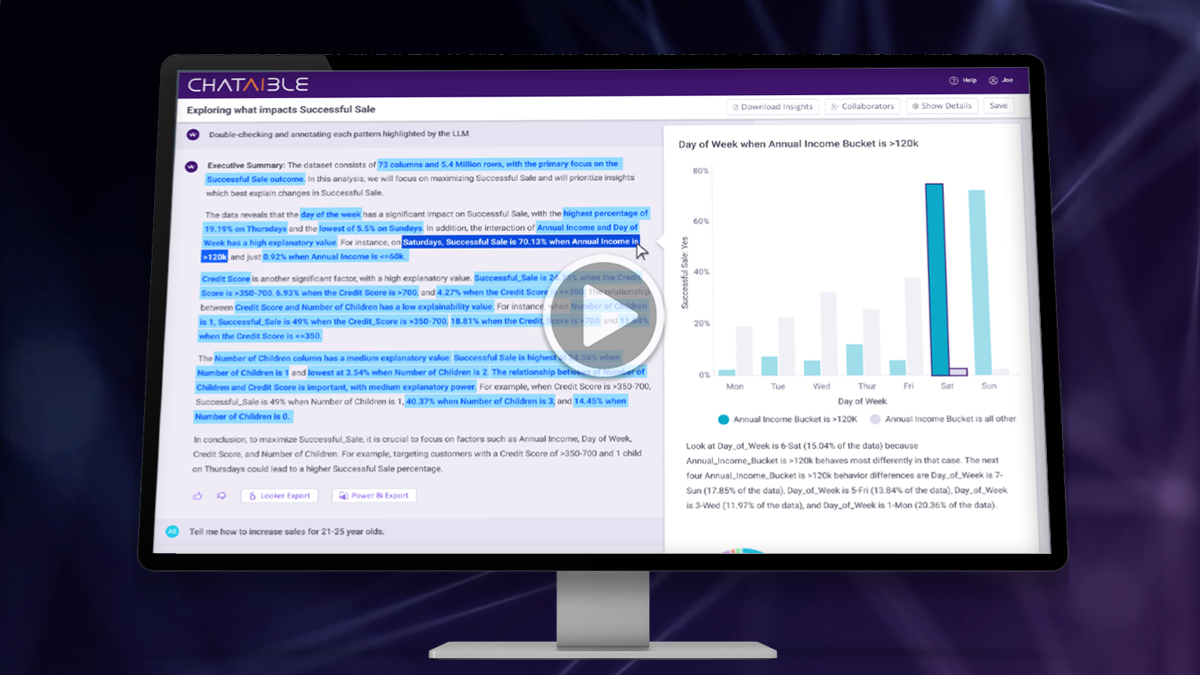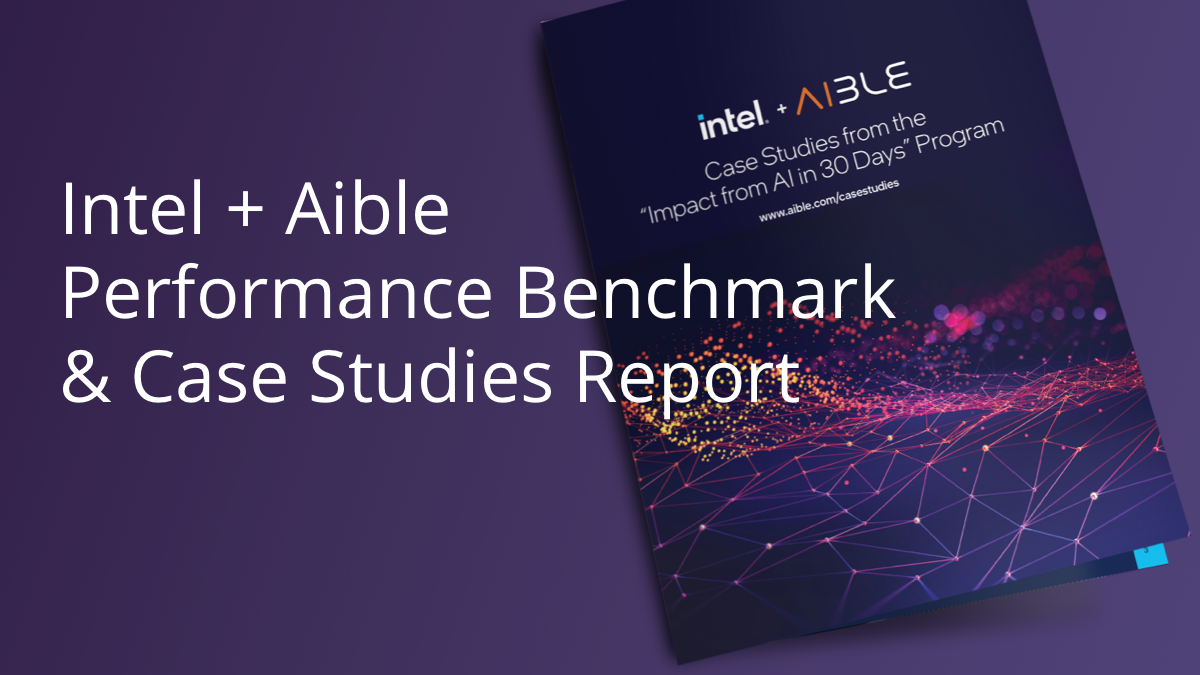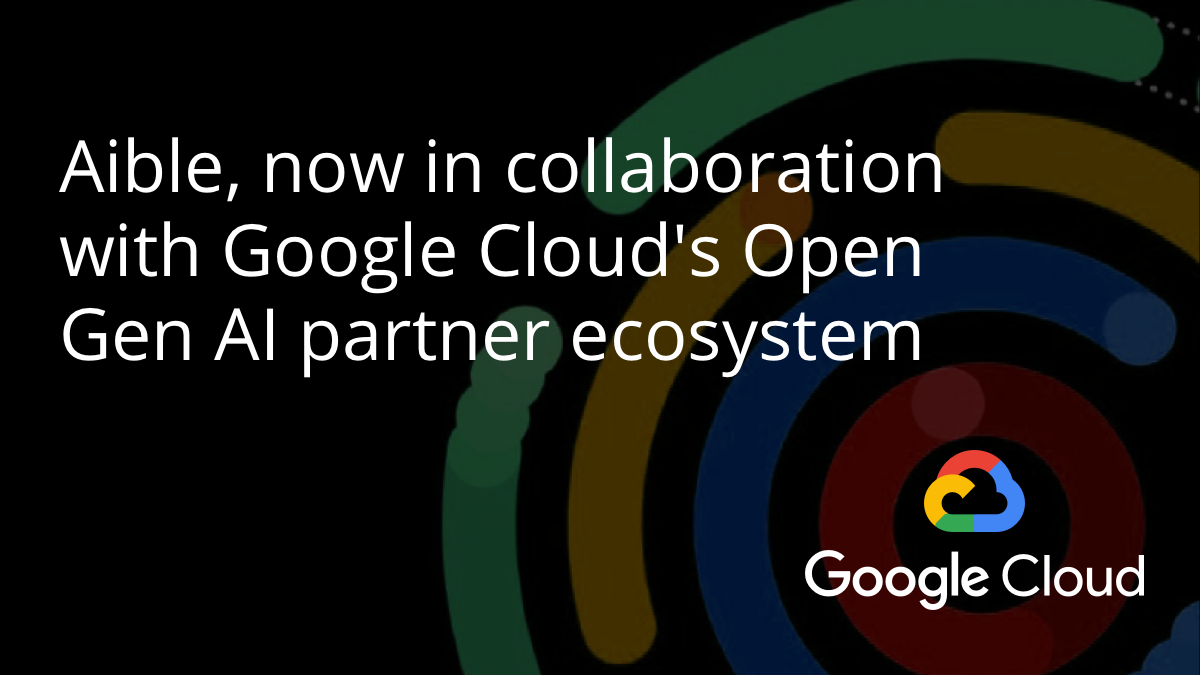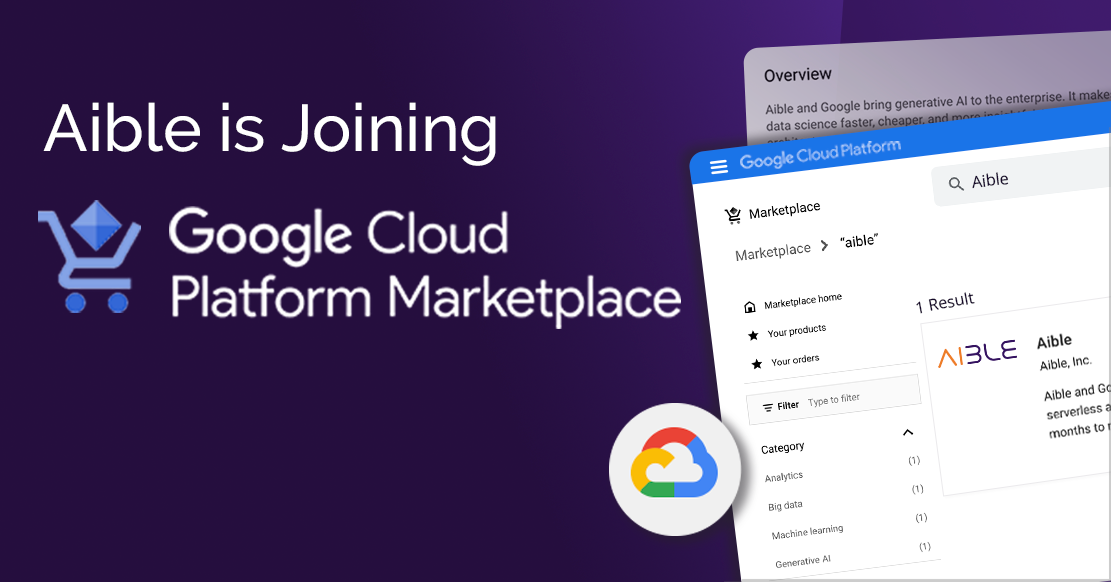Posted by Arijit Sengupta ● Nov 20, 2023 1:23:36 PM
What’s New In Generative AI with Aible

I have spent much of my career fighting dashboards – those ubiquitous but inflexible means of looking at the same metrics every day. Augmented analytics also known as “smart data discovery” offered a way to use AI to automatically find what we needed to know, not just what questions we knew to ask in a dashboard. For example, a retail dashboard may include charts of sales by geography or sales by product, but the key insight in the data may be that a specific product is doing especially well in a specific country with a specific demographic. The dashboard would not show that insight unless by chance the analyst had filtered down to that specific pattern and included the corresponding chart in the dashboard. The problem is that there are millions of such possible ‘group-by’ and ‘drill-down’ charts even with a simple dataset and a human analyst simply could not evaluate them all. Thus the need for AI. BeyondCore (my previous startup, now Salesforce Einstein Discovery) was one of the first companies that delivered Augmented Analytics and was supposed to spell the end of dashboards. The problem was that even when the right charts were sent to the user, they needed help with interpreting the charts and asking follow up questions. Thus, while we automated the analysis tasks of the analyst, we failed to address the translation tasks. In essence, we failed to address the last mile problem. Thus, the need for GenAI. And why this Halloween release we launched the Aible GenAI-powered Natural Language Query (NLQ) dashboard. Trick or Treat!
In our user research we discovered that NLQ dashboards were a great way to bridge the gap between what is familiar (the dashboard) and the unfamiliar (GenAI NLQ). Essentially the user starts out with a familiar dashboard with multiple examples of GenAI NLQ questions and responses and then can just copy and edit those questions to ask their own. Aible uses AI to also address the key problem of NLQ solutions – what questions should we ask? Knowing the right question to ask is the biggest part of the problem and the Aible GenAI NLQ dashboard starts the user off with several good questions to riff from. The starting questions can be selected manually by central analytics/IT teams, based off popular questions from peers, or automatically recommended by Aible analysis.
Aible also addressed a key problem with GenAI NLQ – making sure it is answering the right questions accurately, addressing the biggest challenge around GenAI hallucinations. Other solutions use a single model to translate the users’ questions into Structured Query Language (SQL) and then execute that SQL to produce the answer. They provide the SQL to the user so that they can check that the SQL looks correct. The problem is that most business users don’t know how to read SQL and would have no way to know whether it is correct. Given high hallucination rates for the GenAI models (look up exact percent for NLQ) there is a significant chance that the model misunderstands the question and translates it into the wrong answer. As long as the answer is plausible, the end user has no way to check on the answer short of learning SQL. Instead of getting a narrow response to the NLQ, if business users were given additional context to the response, it would make it easier for them to check the validity of the GenAI response. Aible provides the added relevant business context to the response by using two models – one to understand the user’s question and answer it exactly, and the other to generate a SQL query that is slightly broader than the user’s question and includes information that provides additional context to the user to enable them to do a gut-check of the response. In our user testing we found that, for example, if a user asks for revenue from Germany that year and the AI gives a single number answer, it is hard for the user to detect errors. However, if the AI gives the answer but also includes the revenue numbers for Germany for a few more years for context, or includes the revenue numbers from other countries for context, the user is able to detect AI errors much more effectively. In essence, context is key in helping business users detect GenAI hallucinations.
Aible’s GenAI dashboard also addresses the fundamental issues of traditional dashboards and NLQ:
Complex manual setup: NLQ systems have always suffered from the need to do complex metadata setup before they could be useful. It turns out GenAI models are very good at figuring out the data dictionary without any manual setup. Aible thus reverses this process by automatically doing all necessary setup from raw data. If it gets something wrong, it can figure it out quickly based on user feedback. Finally, if organizations have unique ways of defining things – fiscal quarters for example – they can simply define that in the Aible chat template and then the GenAI is provided that information when necessary. Aible thus requires no or very minimal setup to get started.
Dashboard fragmentation: Organizations often end up with hundreds of dashboards that are simple variations on a core dashboard. Essentially different executives insist on one or more additional charts and the analytics team are forced to create a new variant of the dashboard for each such request. With Aible’s GenAI NLQ dashboard, users can simply ask and add a few more questions to their own dashboard without affecting other users. They can also share the modified dashboard with others, or if they have the correct permissions, they can even update the original dashboard for everyone.
High cost and long response time: In our analysis of user questions at larger organizations, we found that there was significant overlap. Once we looked at the underlying themes of the questions – because there are many ways to ask essentially the same question – there was even more overlap. In traditional approaches, when such redundant questions are asked, you incur the GenAI model response cost as well as the cost of querying the underlying data. Aible however detects that essentially the same question has been asked recently and responds from a cache without incurring the unnecessary cost. The average response time is also much faster as a result. Of course, users can always turn off the caching response if they want more up to date answers. Others then benefit from the more up to date answers when they ask similar questions.
Finding the right dataset or dashboard: In a world with many datasets and dashboards, users often can’t find the right one to ask questions of. Aible solves this by enabling users to ask their questions outside the context of a dataset, then searching for available datasets/dashboards that may help answer the question. Users can then choose from a shortlist of dataset/dashboard choices to get the specific answer to their question.
In enterprise software we often end up with these ‘past is prologue’ moments. The boring old dashboard may turn out to be the perfect bridge to the GenAI powered analytics revolution that will empower every business user to unlock the value of their enterprise data. 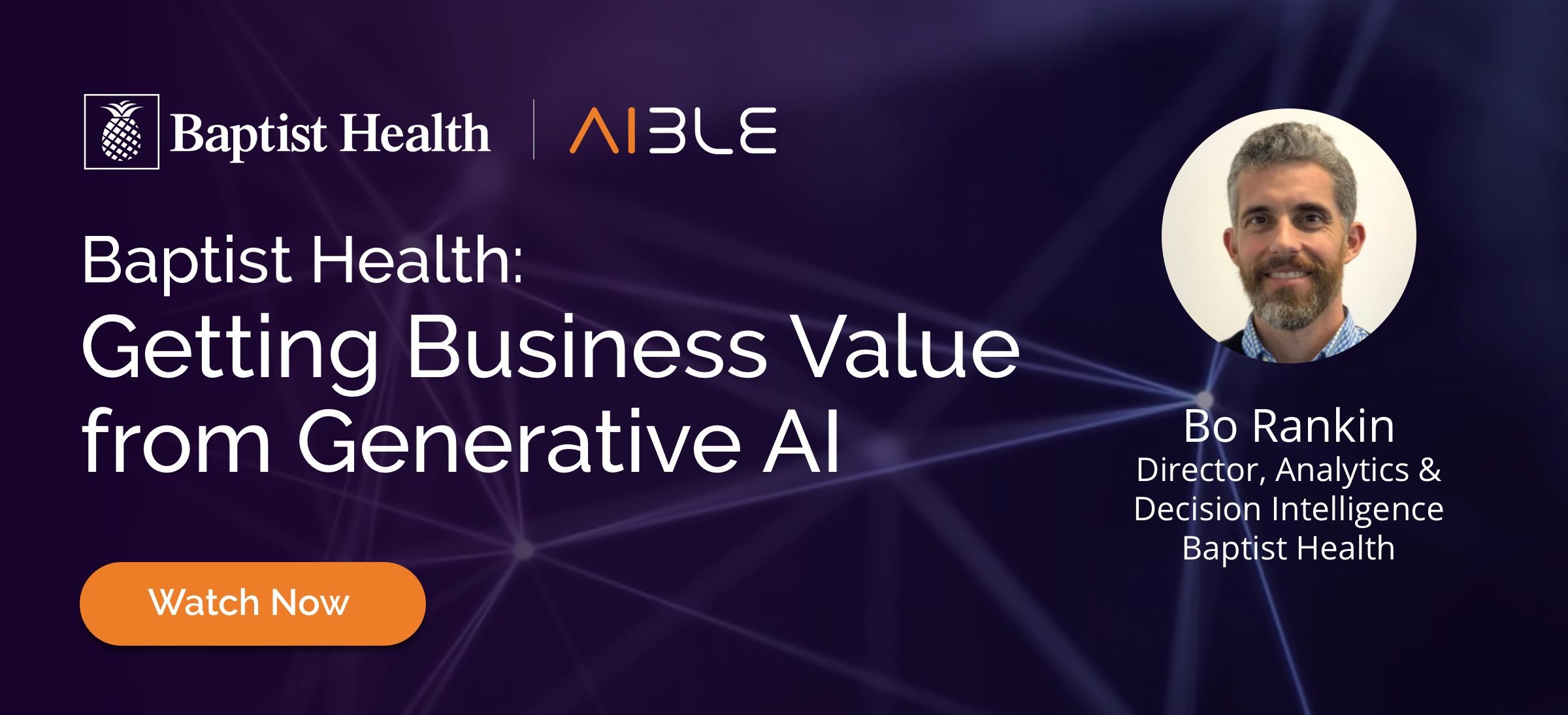
See this 30-minute session with Bo Rankin from Baptist Health to see how they are systematically taking their existing Tableau dashboards and systematically unlocking the value of that data via Augmented Analytics and Generative AI:
5:20: “Its finding some really cool surprising patterns that … would have taken us weeks or months or we would have never even thought to analyze – and it just pops off the page.”
9:20: good examples of business KPIs to start from
20:20: “with other vendors, they said you can do generative AI in your enterprise but you have to do a whole bunch of work in your data warehouse, the data catalog, and that was not our experience at all with Aible. It was literally just, here is your dataset, run generative AI on it, and it was immediately relevant… It was a completely different model from other solutions we have been talking to.”
22:55: “I would put the natural language query in front of [the business user]… And now I have put myself out of the dashboard business. Where they can get whatever question answered that they want right on the data itself and they don’t have to go ‘where was the dashboard again?’”
See this nine minute video from the Gartner Summit that explains the Aible approach and includes customer commentary from Cisco, UnitedHealth Group, and NYC Health & Hospitals
Best Regards,
Arijit
